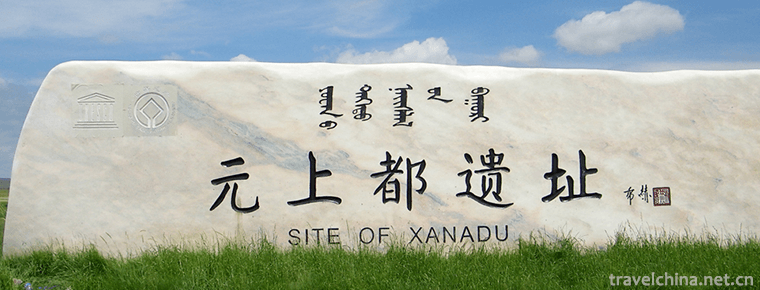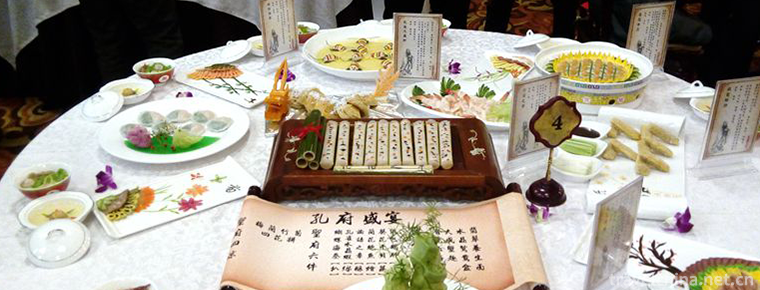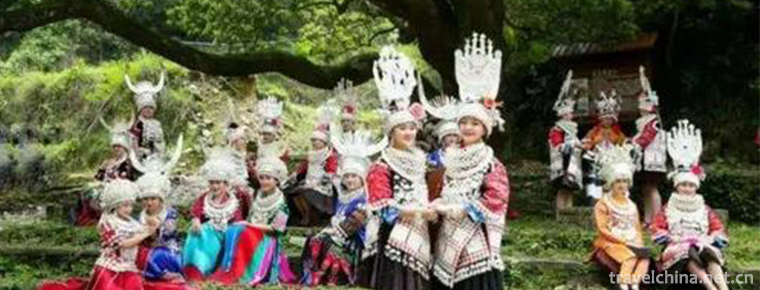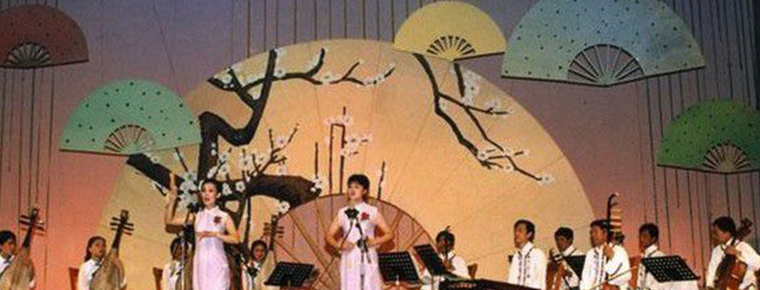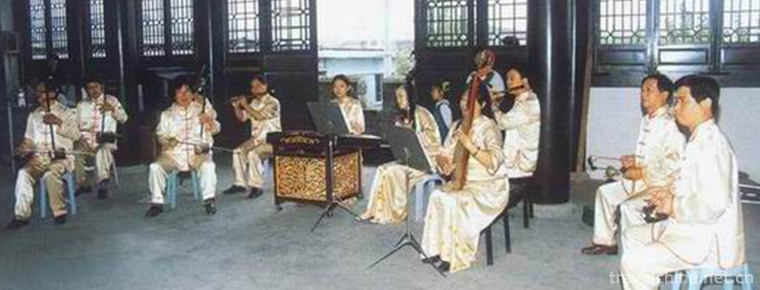Tibetan astronomical calendar
Tibetan astronomical calendar
Tibetan astronomical calendar is the study of Tibetan people living on the Qinghai-Tibet Plateau for generations. Under the special natural geographical and climatic conditions of the plateau, in the long-term production activities, according to the needs of production and life, they constantly observe the celestial phenomena such as the sun, the moon and stars, the cold and warm climate, the four-season solar terms, the growth and change of animals and plants, and summarize and accumulate practical experience and absorb the week's experience. The theory of astronomy and calendar in Borderland and ancient India developed. It is the science of studying the distribution, operation, structure and development of celestial bodies such as the sun, moon and stars in the universe. It belongs to one of the five Ming Dynasties in the Shiming (discipline) of Tibetan traditional culture. The Tibetan language is called "Zi" or "Suming". Simply put, the Tibetan astronomical calendar is a unique science that can help people avoid evil and promote good in life and production by calculating the movement of stars in the universe and the various data of seasonal changes, and by referring to some phenomena, we can judge the year-old, month-day, and pre-infer the movement rules and positions of various stars to understand the good and evil of climate change and the development of things. Section. It summarizes the experience of astronomy and geography, and constantly improves it. It is the wisdom crystallization of Tibetan people's communication with nature for thousands of years. According to the ancient theory of five elements and eight hexagrams and the astronomical calendar books brought by Princess Wencheng into Tibet, the Tibetan people have evolved an astronomical calendar algorithm, which marks different years with white, black, brown, green, yellow and red colors.
On June 7, 2008, the Tibetan astronomical calendar was approved by the State Council and listed in the second batch of national intangible cultural heritage.
historical origin
Origin of Tibetan calendar
There are three sources of Tibetan calendar: one is the inherent phenological calendar of the Tibetan people; the other is the calendar of time and turns introduced from India; and the third is the calendar of time and constitution introduced from the Han Dynasty. In addition, there are five elements arithmetic introduced from the Han nationality and phonology introduced from India.
From the relevant literature and historical data and research results at home and abroad, it can be seen that before the establishment of the Tubo Dynasty, Tibetans had a calendar. From the ancient Tibetan phenological calendar, the main popular calendars before the unification of the Tibetan Plateau were the lunar calendar and the solar calendar. Before Songzangganbu of the Tubo Dynasty, although there was no relatively unified written language on the Qinghai-Tibet Plateau, where the Tibetans lived for generations, according to historical records, when Nie Chizanpu, the first Zanpu of the Tibetan nationality, came to power in 469 BC, there were twelve wise Benzens on the land of Tibet at that time, among whom there were doctors specializing in "gifted medicine" and "divination and divination". The arithmetic shows that there were professionals engaged in Tibetan medicine and calendar at that time, and that there was a relatively systematic calendar at that time.
According to records, as early as 100 B.C., Tibetans had their own calendar, that is, the Benzene calendar, which uses the moon's circle, deficiency, Shuo and expectation to calculate the months. On the first day of New Year's Day at that time, "Monthly Calculations for the Textile Elderly" summarized in detail the rich production experience and astronomical calendar knowledge of the Tibetan people at that time. Later, Princess Wencheng came to Tibet and brought many classics. Among them, astronomical calendar books played an important role in the improvement and development of the original Tibetan calendar.
The Development of Tubo Period
By the 6th century, Tibet had a relatively natural and accurate calendar. The relevant historical materials are recorded as follows: "Fourth, wheat ripening is the first year of life." Wait. Now, tracing back to the folk knowledge of astronomy and calendar, as well as the remaining valuable documents (such as the Dunhuang Tibetan volumes P. T. 76, 1, 82, 83, 85 and P. T. 55, 80, China) in the Library of Paris), we can also see one of the traces of the Tibetan calendar. Tibetan astronomical calendars and non-governmental intellectuals affirm such figures: one is 7 points, the other is 4 fixed points. This should have been finalized in the Tibetan calendar. It is precisely because of the 4 7 monthly records that lead to the unique leap days and difference days in Tibetan calendar. The 4-point method is used to divide the four points of calculating the sun: spring equinox, summer solstice, autumn equinox and winter solstice, which are divided into four seasons according to plateau climate change. According to the Ben religion tradition, the method of estimating the 60th anniversary of the Jordanian Period existed in the Tubo period. All these indicate that the Tibetan calendar in the Tubo period is relatively complete. But because the whole ancient Tibet was under the rule of Ben religion culture at that time, all the calendar knowledge and practice were based on Ben religion culture as a theory and guidance. Later, with the extermination of Ben by Buddhism, many Ben religion calculators were persecuted, a large number of Ben religion classics were destroyed, and the ancient astronomical calendar knowledge of Tubo preserved in Ben religion culture was lost, so it was difficult for modern people to understand the calendar at that time.
The 7th century A.D. After the establishment of the Tubo Dynasty, the written language was unified, the code was established, and a series of policies such as revitalizing Buddhism, revitalizing Tibetan medicine and calendar were adopted. From the mainland, as well as India and other neighboring countries at that time, Dashi absorbed advanced medical and calendar contents and enriched them into Tibetan astronomical calendar, thus making great progress and development in Tibetan medicine and astronomical calendar science. Especially after Yutuo Yundangongbu, the founder of Tibetan medicine, became famous, he compiled many classical works of Tibetan medicine, such as Four Medical Codes and Calendar Calendar. Shan Du Lun and other calendar books have trained many Tibetan medical calendar talents. The famous ones are "Nine Saints of Tibetan Medicine" and "Seven Sages of Calendar", who made great contributions to the development of Tibetan medical calendar in that period. During this period, the knowledge of zodiac and Five-element deduction was introduced from the Han Dynasty and developed into a unique Yin-Yang calendar based on the combination of the ancient natural lunar calendar, the natural solar calendar and the seven-obsidian calendar. According to Qingshi, during the Songzan period of Langri, it was introduced into medicine and Shuming from the Han Dynasty. Especially when Princess Wencheng entered the Tibetan calendar in 641, she brought many astronomical calendar classics. At the same time, four Tibetan youth were sent to Chang'an for study. They learned some arithmetic classics such as Nine Sequels and Three Interpretations and translated them into Tibetan, which had a great influence on the astronomical calendar of the Tibetan people. The most widely spread in Tibet are the five-element method, the twelve-generation chronology, the eighth longevity and sixty years, the Eight Diagrams and Ninth Palace, the twenty-four solar terms and the caloric calculation.
Hour wheel pass
The calendar of Shilun Jing was introduced from India in the 11th century. In the same period, the Persian Banzhida Mutual Gongbu entered Tibet. The famous translator Zhuo Xihuangzha worked with him to translate Shilun Xuanwen Interpretation. The translation of Shilun Interpretation coincides with the Year of the Fire Rabbit, so India's "Round Qiong" algorithm began to spread, and replaced the original "Round Qiongri" algorithm in Tibet, which has been used up to now. The deduction algorithm of "Round Qiong" is based on the combination of iron, wood, water, fire and soil (distinguished by Yin and Yang) and twelve branches. Sixty-year round is called "Round Qiong". If the first year around Qiong (1027) was the year of Yinhuo Rabbit, it has now been passed on to the 16th year around Qiong. This algorithm is similar to the lunar calendar.
After the introduction of Shilun Jing to Tubo, although there are still many kinds of chronology, year setting and month setting methods in Tibet, the calculation of Tibetan astronomical calendar is basically based on the chronological calendar. Since the Tibetan chronological calendar is based on the ancient Tibetan calendar and constantly absorbs useful contents from the Han region to adjust and improve it, it has new development on the basis of chronological calendar. In 1687, the famous university scholar Dissan Jiejiatuo made a careful study of Tibet's astronomical calendar, absorbed the reasonable parts of the Han and Indian calendars, and creatively compiled the book "Bai Shuli" according to the local reality. The book describes the scale, items and contents of the calendar, and draws a fixed table model month by month, which plays a decisive role in the development of Tibet's astronomical calendar.
Improvement of Tibetan calendar
The calendar is the concentrated reflection of the calendar thought. When the astronomical calendar develops to a certain stage, the calendar will inevitably appear. According to the legends and records of Ben religion culture, it can be inferred that Tibetan may have had the calendar in the Tubo period, but there is no literature to confirm it. The Tibetan calendar, which can be proved by the existing history, first appeared in the 13th century (Yuan Dynasty), and by the 19th century, the compilation of the Tibetan calendar has tended to be perfect. From the existing literature, there are some processes in the production and improvement of Tibetan almanac:
In the 11th century, Minzhulin Temple Astronomical Calendar School was founded in Shannan and began to publish the famous Minzhulin Calendar.
In 1206, the first complete almanac of Tibet was published, named the Sakya Almanac. The contents of this calendar include climate, seasonal changes and the good and evil dates of various events, etc. It has played a guiding role in the life, production and travel activities of farmers and herdsmen.
In 1425, Roupu Jiayang proudly wrote the Roupu Calendar.
In 1916, the 13th Dalai Lama Tudengjiatuo founded the Medical and Computing Institute (Menzikang) in Lhasa and promulgated the Menzikang Calendar based on the Minzhu Forest Calendar, which is printed in Woodcut and distributed to Tibet every year.
After the peaceful liberation of Tibet, the Tibetan Hospital of the autonomous region has set up a Tibetan calendar room, which is responsible for the calendar compilation. In 1978, the Tibetan calendar room was upgraded to the Institute of Astronomical Calendar, and the Tibetan Astronomical Calendar Society was established in 1981 to carry out research projects and academic exchanges on astronomical calendar. Since then, Tibetan hospitals in most areas have built a research room for astronomical calendar, and published Tibetan calendar books with local characteristics. According to the director of Yinba Institute of Astronomy and Calendar of Tibetan Hospital of Tibet Autonomous Region, more than 100,000 Tibetan calendar books are published and issued every year, which is the largest Tibetan document in circulation besides Tibetan textbooks. It is also exported to India, Nepal, Bhutan and other Tibetan areas in Qinghai, Sichuan, Yunnan and Gansu provinces of China.
Since 1993, the daily weather forecast made by the Institute of Astronomy and Calendar of Tibetan Hospital of Tibet Autonomous Region using the principle of astronomy and calendar has been broadcasted on Tibetan TV and Tibetan People's Broadcasting Station. It has been welcomed by people from all walks of life in Tibet and has achieved high accuracy.
The ancient Tibetan calendar absorbed the theory of five elements and eight diagrams from the mainland of the Central Plains, and marked different years with white, black, brown, green, yellow and red colors. There is indeed the saying of "black year" in the Tibetan calendar, but the saying of "black year" and "black year" of the Tibetan Youth Association is not a concept at all. The saying of "black year" of the Tibetan Youth Association by borrowing the Tibetan calendar not only confuses the common people, but also disgraces the sacred Tibetan calendar tradition. Only the four Zodiac years of pigs, tigers, snakes, monkeys and so on can * become "black years", and there will be a "black year" every 9 years. 2007 is the Year of the Pig, which is regarded as the "Black Year" in the Tibetan calendar. The next "Black Year" is the Year of the Monkey in 2016.
The compilation of Tibetan calendar has a history of more than 90 years for Tibetan hospitals in Tibet Autonomous Region. It is a customary tradition for Menzikang to carry out large-scale data operations every 12 years. Historically, in 1921, 1938, 1947 and 1957, under the personal leadership of Master Chinjerob, astronomical and arithmetic experts from all over the country organized four times to focus on the contents and styles of the Tibetan calendar.
After the reform and opening-up, under the personal leadership and arrangement of President Qiangba Chilie and led by the Institute of Astronomical Calendar of Tibetan Hospital of Tibet Autonomous Region in August 1987, more than 20 astronomical calendar experts from Tibetan hospitals in Xigaze, Shannan, Naqu, Ali and Changdu were convened to calculate the basic data of astronomical calendar from 1989 to 2000. The calculation work not only guaranteed the scientific basis for the compilation of Tibetan calendar from 1989 to 2000, but also trained and trained a new generation of astronomical calendar staff. Due to the participation of Tibetan hospitals in various regions at that time, all the data calculated were copied and shared by Tibetan hospitals in various regions.
By 1998, the last round of operation data was nearly exhausted. It is imperative to carry out a new round of 12-year data operation, which is related to the compilation of the Tibetan calendar in the next 12 years. In order to ensure the smooth implementation of the project, the Institute of Astronomy and Calendar of Tibetan Hospital of Tibet Autonomous Region listed the project as the focus of its work in 1998. Since 1997, some deployments and preparations have been made. On June 3, 1998, the research group formally put into the calculation project, and finally successfully completed all the manual calculation tasks.
Algorithm system
The Tibetan calendar stipulates that a year is 12 months, 30 days for the big month and 29 days for the small month. Every thousand days or so, there is a leap month to adjust the relationship between months and seasons. Tibetan calendar uses the chronological method of time rotation, dividing celestial bodies into twelve palaces: Aries, Pisces, Taurus, Capricorn, Gemini, Lion, Cancer, Aquarius, Horse, Virgin, Scorpio and Libra. Five elements age is matched by twelve genera. It takes twelve years as a small cycle and sixty years as a large cycle, which is called a "round-the-clock". The first one is that the "winding song" began in 1027 AD. 1987 was the first year of the seventeenth "Ring around". The Tibetan calendar of 1991 is called the Year of Golden Sheep. This is similar to the chronology of the Han Lunar calendar and the same genus.
Business organization
According to Tibetan practice, astronomical calendar business is located in Tibetan hospitals. The compilation of Tibetan calendar has a history of 100 years for Tibetan hospitals in autonomous regions. It is a customary tradition of "Menzikang" to carry out large-scale data operations every 12 years.
Basic system
Generally speaking, astronomical calendar is a natural science that expresses and calculates the unknown objects such as the azimuth, time and area of various celestial bodies by means of mathematical operations such as addition, subtraction, multiplication and division. It is the practical experience accumulated by the Tibetan people on the plateau in their long-term production activities, according to the needs of production and life, constantly observing the celestial phenomena such as the sun, moon, stars, cold and warm climate, and the four seasons, changes in the growth of animals and plants.
Astronomical calendar includes not only the calculation of the motion values of five planets, the setting of leap months and absent days, the prediction of solar and lunar eclipses, but also the estimation of farming and animal husbandry opportunities, phenology, season, human pulse change cycle, especially the medium-term, long-term and short-term weather forecast, based on the principles of astronomical calendar, which is calculated and compiled annually by the Institute of Astronomical Calendar of Tibetan Hospital of the Autonomous Region. The Tibetan calendar basically includes the above contents. Therefore, Tibetan calendar is a special manifestation of the research results of astronomical calendar.
Since the introduction of the Shilun Jing calendar from India in the 11th century, although there are still various methods of dating, setting the first year and setting the leap month in Tibet, the calculation of Tibetan astronomical calendar is basically based on the time lunar calendar.
Chronological system
The Tibetan lunar calendar is characterized by the combination of Yin and Yang. In addition to 12 lunar months (i.e. the new moon), leap months should be set to adjust seasonal variations. At the same time, it has a unique set of principles and data systems to calculate and forecast celestial phenomena, solar, lunar eclipses and 28-bed days in a day. Five-star orientation, as well as the forecast of solar and monthly eclipses of various items.
computing time
There are seven units for calculating time in Tibetan chronological cycle: breath (breathing hectares), six breaths as one point (missing points), 60 minutes as one moment (missing points), 60 minutes as one day, 30 days as one month and 12 months as one year. Among them, "breath" is measured by the time required for a healthy adult man to breathe in and out, which is about 1/21600 of a solar day and 24 minutes for a moment.
computing method
The calculation method of Tibetan chronological calendar is also unique. It measures 29.53058 solar days per lunar month, but stipulates 30 full-sunny days per lunar month. In order to correspondingly coordinate the solar day and the sun-cloudy day. There are leap days and difference days, and the size of the month is determined by the same day and difference days. Months with or without leap days more than leap days are small months, 29 days a month; months with or without leap days are big months, 30 days a month.
The Rules of Leap Day and Kirigen: The Summary of the Lunar Calendar, compiled by Tibetan scholars themselves, summed up a concise and concise formula, that is, "the heavy go to the big, the short go to the small". The fourth word of the two sentences denotes the ordinal number of obsidians (weeks) given in the astronomical calendar. The third word denotes the date in the calendar. The fourth word denotes the value at the end of two days of too obstructive day. If the order of obsidian repeats, one solar order will be removed. If the order of obsidian is short, another solar order will be added. The continuity of the date will be maintained mainly by the number of obsidian orders.
The most important contents of Tibetan chronological calendar are "five elements" and "three-day calculation". Five elements are also called "Five Coverages": 1) Ying (referring to the end of the cloudy day); 2) Date (referring to the combination of the date and the five names of joy, goodness, victory, determination and fullness); 3) Star (referring to the sun, sun and moon, that is, where the moon is located at the beginning of the sun day); 4) Meeting (from the fixed day and the moon dormitory); 5) Function (referring to the front and back of the role). (1) It is a scientific component of the calendar; and (4) it is related to divination. "Three-day calculation" refers to the solar day (from the first day to the second day is a complete solar day), the cloudy day (refers to the moon running white fraction, black arc length of each 1/15 of the time required), and the Miyagi day (refers to the sun through a palace 135 arc length of 1/30).
The above "leap day and difference day" settings, five-inclusive and three-day calculation are the most fundamental basis of Tibetan calendar calculation, which is called "the key point of calendar calculation". Among them, "three-day calculation" in the calculation of five-star operation, often three algorithms are carried out at the same time, playing a role of mutual review.
Proportional relations of various names
There are three years, months and days in the calendar, each with the names of the Sun, Taiyin and Palace. The proportional relationship between them is as follows: the solar calendar, the lunar calendar, the solar calendar, the solar calendar, the solar calendar, the solar calendar and the solar calendar
1 solar year = 12 solar months = 360 solar days
1 lunar year = 12 lunar months = 360 lunar days
1 Palace Year = 12 Palace Months = 360 Palace Days
65 Palace Day = 67 Taiyin Day
64 Too Obstructive Days 63 Solar Days
The palace year mentioned in the chronological calendar is the modern star year. In the calendar, there is no distinction between the stellar year and the regression year, but only the palace year. In the actual calculation, the four elements of the solar year, the solar day, the lunar month and the cloudy day play the most important role, while the solar year and the solar month in the chronological calendar have no practical significance in astronomy.
Imaginary celestial body
There are also two hypothetical objects in the chronological calendar, namely, the Luo Hao and the fire robbery (Luo Hao Wei). And lengthen the tail comet. They are also known as "Tan", a total of "10 Tan". The five-star cycle is the same or similar as the data measured by modern science. In the chronological calendar, like other celestial bodies, Luo Hao has its own operating cycle. The difference is that there are only a few but no "elephants" and it is a "obscure". Its period of motion is 30 lunar months, totaling 6792.04 solar days, which is quite accurate (today's measurement is 6793.460). The orientation of Luo Huo is expressed in the Yellow Meridian and subtracted by the circumference of 27 nights. The result is called "Luo Huo Tou" in the chronological calendar, and the opposite is called "Luo Huo Wei", which corresponds to the yellow-white ascending and descending intersections in astronomy. Long-tailed comet in the chronological calendar is the capital of Jiuyi.
Calculating process of solar and lunar eclipses
The calculating process is: dividing the accumulated months by the period of the Luo's head, dividing the surplus into days, then calculating the solar eclipse plus 30 days, calculating the lunar eclipse plus 15 days, multiplying the degree of daily operation of the Luo's head to get the value of the Luo's tail (in this value, the value of the Luo's tail is added by half a week); then calculating the Yellow meridians of the sun and the moon, in the values of the sun, the bright yellow meridian and Luo's head and tail. The closest ones are subtracted; finally, the difference between the two is used to judge whether there is an eclipse or not.
Tibetan Medicine and Tibetan Calendar
In Tibet, Tibetan medicine and Tibetan calendar are closely related. In the eighth century, the Department of the Tibetan medical work "Four Medical Codes" published by Yutuoningma Yuandan Gongbu, a Tibetan physician, formed a relatively complete theoretical system of Tibetan medicine. Because Tibetan medicine believes that with the change of seasons, the circulation of gas and blood in the five viscera of the human body varies, Tibetan medicine attaches great importance to observing the changes of stars, clouds, winds, lakes and birds.
According to Tibetan practice, astronomical calendar business is located in Tibetan hospitals. A group of scholars gathered in the Tibetan hospital. Every calendar is calculated by scholars in Tibetan hospitals the year before.
The official use of the Tibetan calendar began in 1027 AD and has been in fashion ever since. Originally, Tibetans had their own calendar algorithm in the first century B.C., that is, the Benzene calendar which calculates the month by the moon's circle, deficiency, Shuo and expectation. At that time, the first day of the New Year was the same as the first day of November in the present Tibetan calendar. There is an ancient calendar book called "Textile Old Man Monthly Calendar", which summarizes in detail the rich production experience and astronomical calendar knowledge of the Tibetan people at that time. Later, Princess Wencheng came to Tibet and brought many classics. Among them, astronomical calendar books played an important role in the improvement and development of the original Tibetan calendar. At this time, the determination of the New Year's date has progressed from the brightness of the moon to the main basis of stars, that is, the brightness and location of ghost stars as the standard. However, the New Year is still November 1 in the Tibetan calendar. Later, the original Tibetan calendar absorbed the calendar technology of the Han Dynasty and gradually improved into today's Tibetan calendar.
The Tibetan calendar stipulates that a year is 12 months, 30 days for the big month and 29 days for the small month. Every thousand days or so, there is a leap month to adjust the relationship between months and seasons. Tibetan calendar uses the chronological method of time rotation, dividing celestial bodies into twelve palaces: Aries, Pisces, Taurus, Capricorn, Gemini, Lion, Cancer, Aquarius, Horse, Virgin, Scorpio and Libra. Five elements age is matched by twelve genera. It takes twelve years as a small cycle and sixty years as a large cycle, which is called a "round-the-clock". The first one is that the "winding song" began in 1027 AD. 1987 was the first year of the seventeenth "Ring around". The Tibetan calendar of 1991 is called the Year of Golden Sheep. This is similar to the chronology of the Han Lunar calendar and the same genus.
The Tibetan calendar not only predicts whether the next year will be smooth, whether there will be drought, snow or earthquake, but also whether there will be rain on a certain day and the good or bad of each day will be marked one by one. It is said that the Naqu Tibetan Hospital has accurately predicted three earthquakes in northern Tibet in 1986. It is mainly based on weather forecast. The celestial phenomena are the forms of a great Buddha. The giant Buddha symbolizes the earth, and the gesture of the giant Buddha is symbolic. If the giant Buddha stands, it means that there are earthquakes, hurricanes and plagues. If the giant Buddha sits, the world will be safe.
Five-line algorithm graph
This map mainly shows the concrete calculation of five elements (wood, fire, earth, gold and water). The main body of the whole pattern has four circular ribbons from inside to outside, which are yellow, blue, red and green, representing the earth, wood, wind and fire in the "four big" in turn, and the remaining blanks represent the "blank". The central part of the picture is Xumi Mountain, which Buddhism believes is the world center. The four continents are surrounded by yellow. The blue ring is the orbit of the sun and moon stars, namely "Guola".
Tibetan calendar content
Astronomical calendar has a wide range of applications in Tibetan people's real life, such as timing, calendar compilation and orientation determination. Its content is not only to explore the laws of celestial movement and natural changes, but also to explore the close relationship between the diagnosis and treatment of diseases and seasonal climate change (learners have the tradition of learning medicine and arithmetic concurrently, so far, the Tibetan Institute of Astronomical Calendar is also under the leadership of the Tibetan Hospital). Another important part of the Tibetan calendar is weather forecasting. In ancient times, Tibetans invented many meteorological prediction methods, such as judging meteorological changes by observing the color and shape of plants, animals, rivers, stars, ice beds, clouds and the direction of wind; observing and analyzing the weather conditions during fox day, bird day, sunset day, calendar day, two-to-day, room wall day, white glue day, etc., and combining the lion chart, tortoise chart and five-star motion value, etc. Weather conditions for the coming year, such as snow, hail, frost and dew, drought and flood, earthquakes and other natural disasters, are measured. According to the seasonal activities of wild ducks, cuckoos, Daisheng birds, geese, crows and swallows waiting for birds, the early, middle and late sowing of agricultural matters in various parts of Tibet are arranged. This method is still widely used in the vast rural pastoral areas.
In addition, the Tibetan calendar also includes five elements, seven obsidians, eight diagrams, nine palaces, twelve zodiacs, twenty-four solar terms, sixtieth anniversary, Spring Niu Mang God, rhythm occupation, life, Qiyun, Kanyu Fengshui and so on.
Inheritance and innovation
The compilation of Tibetan calendar should first be based on scientific data calculation. Without scientific and accurate basic data as the basis, the scientificity and accuracy of Tibetan calendar can not be talked about. In order to ensure the scientificity and accuracy of the calculation work, they are going to continue to adopt the method of combining manual calculation with computer programming calculation.
In order to ensure the smooth implementation of this project, the staff of Tibetan Calendar Institute of Astronomy and Calendar (TICA) have specially designed a sufficient quantity and quality of the calendar tool-sand table two years ago, and have made adequate preparations since 2010. The compilation of the calendar for 2011 was advanced to the end of 2009, and the compilation of the calendar for 2012 was advanced to January 2011. The compilation task has been basically completed, creating conditions for the development of the 12-year project.
In order to ensure the accuracy of the calculation results, Yinba-led research group has historically applied computer programming calculation to the project for the first time. It is to print out all the data of the five elements of the system, the five elements of the action and the motion values of the five planets of the sun and the sun during the twelve years from 2001 to 2012 by using the computer application program compiled by Yinba. It realizes the comparison and proofreading with the results of the manual calculation, and ensures the accuracy of the calculation results. This initiative has made computer input into Tibetan astronomical calendar work a pioneer and of far-reaching significance.
By May 2011, the last round of 12-year calendar data has been used up, and a new round of 12-year calendar data calculation is imminent.
Refute the doomsday
Experts from the Institute of Astronomy and Calendar of Tibetan Hospital refuted the "doomsday" theory from the perspective of Tibetan astronomy and calendar.
The term "doomsday" in 2012 comes from the Mayan calendar. Archaeologists found that the Mayan calendar ended on December 21, 2012, and people speculated that it was the end of the world. In addition, the above-mentioned movies fabricated and rendered the day, misleading many people.
Similar to the Mayan calendar, according to Yinba, the Tibetan astronomical calendar also records the five planets on the same straight line, but in this case, it only calculates the remaining number of the five planets in the course of their operation to zero, which only has an impact on the calendar calculation level, and there is no classical record of natural disasters or what the end of the day will occur.
Tibetan astronomical calendar calls the number of years between two successive five planets "the number of years entering the sky". Yinba said that the number of years from the last "empty" to the present would be more than 20 if expressed as modern Arabic figures, and the number of years from the next "empty" would be more than 20 astronomical figures.
Tibet's astronomical calendar, which has a history of thousands of years, has completed the calculation of the basic data of Tibetan calendar in the next 12 years of 2012, and can calculate the calendar calendar calendar calendar of 2150 years. Calendar experts refute the absurdity of "doomsday 2012" from the perspective of astronomy, calendar, religion and modern science.

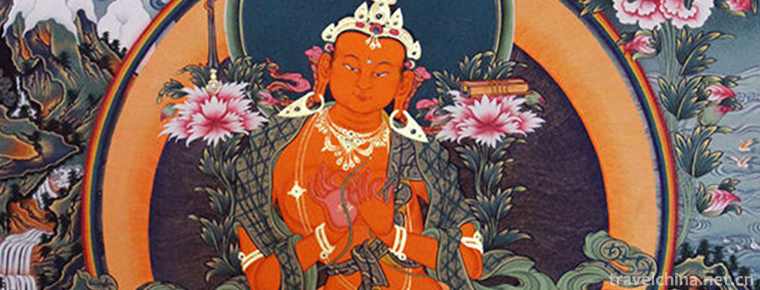
-
The Wudalianchi Scenic Area
Wudalianchi Scenic Spot: National AAAAA Scenic Spot, World Geological Park, World Human and Biosphere Reserve, International Green List.
Views: 190 Time 2018-12-05 -
Guangyou Temple Scenic Area
Guangyou Temple is located in Liaoyang City, Liaoning Province, with Baita in the West and moat in the east. It covers an area of 60,000 square meters. The central axis of the north and south is archw.
Views: 150 Time 2019-01-13 -
Mengfu Mengmiao Scenic Area Meng Temple
Mencius Temple, also known as Yasheng Temple, is located at 44 Yashengfu Street, Zoucheng City, Jining City, Shandong Province, where Mencius, a thinker of the Warring States Period, was sacrificed..
Views: 173 Time 2019-02-07 -
Shenzhen Maritime Pastoral
Shenzhen Maritime Pastoral Tourist Area is administratively located in Shajing Street, Baoan District, Shenzhen City. It is located at the eastern port of Pearl River estuary.
Views: 199 Time 2019-02-08 -
Cooking Skills of Confucian Cuisine
The cooking skill of Confucian cuisine, the traditional handicraft of Qufu City, Shandong Province, is one of the national intangible cultural heritages..
Views: 97 Time 2019-05-09 -
Miaos Rock planting Custom
Traditionally, the Miao people have a kind of public deliberation and legislative activities called "burying rock" (also known as "planting rock". When burying rock, they bury a re.
Views: 193 Time 2019-06-05 -
Traveling Books in Ningbo
Ningbo Walking Book, originally known as "Lotus Document" or "Plough Document", is one of the traditional local operas in Ningbo, Zhejiang Province. Sing in Ningbo dialect. Ningbo .
Views: 212 Time 2019-06-08 -
Cork paintings
Cork painting, also known as cork carving, woodcut. Chinese traditional folk sculpture crafts. It is mainly produced in Fuzhou, Fujian Province. It is a handicraft combining carving and painting. Simp.
Views: 149 Time 2019-06-11 -
Shaoxing Ci Tone
Shaoxing Ci Diao, also known as Flower Diao, is commonly known as vernacular. It is a traditional folk song sung by blind artists (most of whom are women), and a story sung by three to nine people in .
Views: 144 Time 2019-06-14 -
Water Encouragement
Water drum dance is a kind of popular dance spread between the De'ang and Miao nationalities. It combines water, drum and dance to worship ancestors, pray for good weather and peace in villages. Howev.
Views: 140 Time 2019-06-15 -
Suining social security
By the end of 2019, there were 23400 registered unemployed people in Suining, with the registered unemployment rate of 3.62%. 855000 people participated in the basic endowment insurance for urban employees, an increase of 114800 over the end of last year..
Views: 115 Time 2020-12-16

